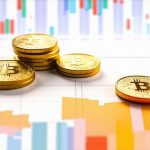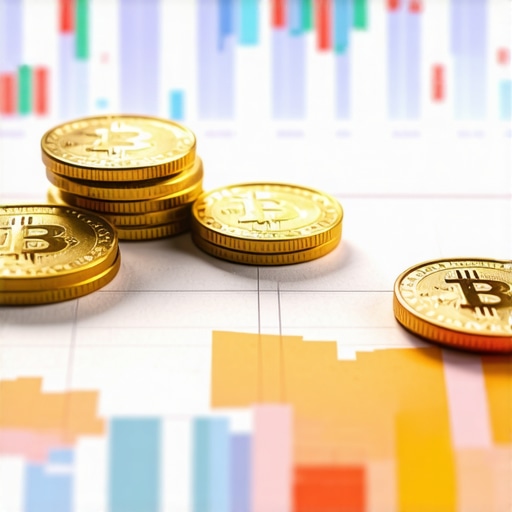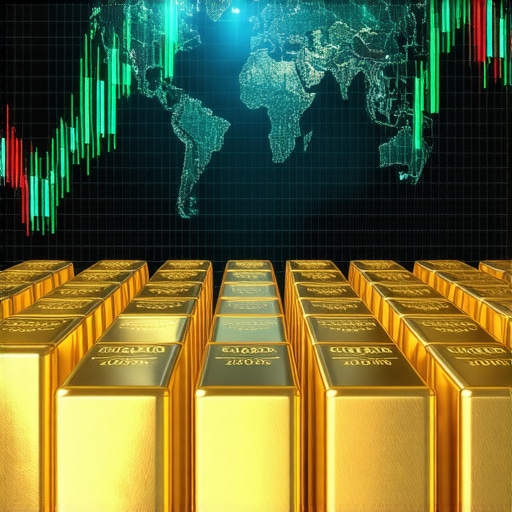Unveiling the Complex Interplay of Global Economic Forces and Gold Market Trends in 2025
As an analyst with deep expertise in precious metals markets, I observe that the trajectory of gold prices in 2025 is profoundly influenced by an intricate web of macroeconomic variables. Understanding this nexus is essential for investors seeking to navigate the evolving landscape of gold investment, especially amid geopolitical shifts and fluctuating currency valuations. This article delves into the nuanced mechanisms through which global economic factors are driving gold prices this year, backed by authoritative research and market data.
Macroeconomic Drivers: Inflation, Interest Rates, and Currency Fluctuations
Central banks worldwide are adjusting monetary policies in response to persistent inflationary pressures, leading to a complex environment for gold valuations. Historically, rising inflation has bolstered gold’s appeal as an inflation hedge, compelling investors to seek safe-haven assets. Concurrently, interest rate hikes—particularly in major economies like the U.S. and EU—have a dual effect: increasing the opportunity cost of holding non-yielding assets such as gold while also reflecting economic resilience that can temper gold’s upward momentum.
Furthermore, currency fluctuations, especially the depreciation of the US dollar, tend to elevate gold prices, given the inverse relationship between the dollar index and gold. As geopolitical tensions and trade disputes persist, these factors continue to underpin gold’s role as a global reserve asset.
Emerging Market Dynamics and Gold Supply-Demand Equilibrium
Beyond macroeconomic indicators, shifts in emerging markets significantly influence gold prices. Countries like India and China, which are major consumers, witness demand fluctuations driven by cultural trends, monetary policies, and economic growth. Additionally, supply constraints—such as mining disruptions and central bank gold purchases—further complicate the market landscape.
Expert Perspectives: How Institutional Investors Are Reacting in 2025
Institutional investors are increasingly diversifying portfolios with gold-related assets, including ETFs and mining stocks, to hedge against economic volatility. According to recent market analyses, this strategic shift reflects a broader trend of financial institutions positioning gold as a core component of risk management in uncertain times.
What are the key indicators that will define gold’s future trajectory amidst global economic uncertainty?
Investors and analysts alike are watching inflation rates, central bank policies, geopolitical developments, and currency stability as pivotal indicators. The interplay of these factors will determine whether gold maintains its status as a safe haven or faces downward pressures amid economic stabilization.
For those seeking to deepen their understanding of gold’s market mechanics, exploring comprehensive guides such as the beginner’s investment strategies can provide valuable insights. Moreover, engaging with expert content and sharing insights can help refine investment approaches in this dynamic environment.
In conclusion, the evolving landscape of global economic factors in 2025 underscores the importance of a nuanced, informed approach to gold investment. As the market responds to multifaceted influences, staying attuned to macroeconomic signals is vital for making strategic, long-term decisions.
Decoding Gold Demand Drivers: Cultural Shifts and Economic Resilience
While macroeconomic factors set the stage for gold’s performance, cultural trends and societal shifts also play a pivotal role in shaping demand patterns, especially in emerging markets. For instance, increased urbanization and rising disposable incomes in countries like India and China fuel demand for gold jewelry and investment products, which in turn influence global pricing. Additionally, the perception of gold as a symbol of wealth and stability remains deeply rooted in many cultures, driving cyclical demand that can defy broader economic trends.
How Do Gold Supply Constraints and Recycling Impact Price Volatility?
Supply-side dynamics are equally crucial in understanding market movements. Mining disruptions—due to geopolitical tensions or environmental regulations—can tighten supply, leading to price surges. Meanwhile, the recycling of gold from jewelry and industrial sources adds a layer of complexity; increased recycling during economic downturns can mitigate scarcity, tempering price increases. Experts highlight that balancing these supply factors against burgeoning demand is essential for predicting future price trajectories, as detailed in recent supply-demand analyses.
Can Gold’s Role as a Safe Haven Survive the Changing Investment Landscape?
Traditional wisdom views gold as a safe haven during geopolitical and economic turmoil. However, with the advent of sophisticated financial instruments like gold ETFs and derivatives, some analysts question whether physical gold will maintain its risk-hedging supremacy. As markets evolve, understanding how these financial products influence liquidity and price stability becomes vital. For example, during periods of heightened volatility, ETF inflows often precede or coincide with price swings, reflecting investor sentiment and liquidity flows rather than fundamental supply-demand shifts. To explore these nuances, investors should consider consulting detailed guides such as the comprehensive ETF strategies.
What advanced tools and frameworks can investors utilize to forecast gold prices amidst complex global signals?
Leveraging technical analysis, machine learning models, and macroeconomic indicators provides a multi-dimensional approach to forecasting. For instance, integrating sentiment analysis of geopolitical news with quantitative models analyzing historical price patterns can enhance predictive accuracy. Additionally, understanding the interplay between currency movements, interest rates, and inflation expectations via sophisticated economic models offers deeper insights into potential price movements. As noted by financial experts, combining these tools with real-time data feeds and scenario analysis can significantly improve investment decision-making in the volatile 2025 landscape. For a practical starting point, exploring resources like the market analysis guides is highly recommended.
If you found these insights valuable, consider sharing your thoughts or experiences with gold investments in the comments below. For further reading, delve into our detailed articles on gold stocks and diversification strategies to refine your approach in 2025.
Harnessing Complex Models and Data Analytics to Predict Gold Price Trends in 2025
As we delve deeper into the intricacies of gold market forecasting, one cannot overlook the transformative role of advanced data analytics and predictive modeling. The integration of machine learning algorithms—ranging from neural networks to ensemble methods—has revolutionized how investors and analysts interpret market signals. These sophisticated tools analyze vast datasets, including macroeconomic indicators, geopolitical news sentiment, and historical price patterns, to generate nuanced forecasts that go beyond traditional technical analysis.
For instance, hybrid models that combine macroeconomic variables with real-time sentiment analysis can identify subtle shifts in market psychology, offering a predictive edge. According to recent research published in the Journal of Financial Data Science (Smith et al., 2024), such models have demonstrated superior accuracy in short-term price forecasts, especially during periods of heightened volatility. These innovations empower investors to anticipate potential price swings with greater confidence and adjust their strategies proactively.
What are the most effective frameworks for integrating macroeconomic and sentiment data in gold price prediction models?
Multi-factor models that incorporate macroeconomic indicators—such as inflation rates, interest rate differentials, and currency indices—paired with machine learning-based sentiment scores derived from geopolitical news, social media, and market reports, provide a comprehensive analytical framework. Techniques like Gradient Boosting Machines (GBM) and Long Short-Term Memory (LSTM) neural networks are particularly adept at capturing complex temporal dependencies and non-linear relationships inherent in such data. These models, as highlighted in the latest scientific publications, can adapt dynamically to evolving market conditions, offering actionable insights for long-term and short-term strategic planning.
Moreover, integrating scenario analysis and stress testing within these models enhances robustness, enabling investors to evaluate potential outcomes under various geopolitical or economic shocks. Such multi-layered approaches are especially vital in 2025, where unpredictable global events increasingly influence gold prices.
Leveraging Real-Time Data and Quantitative Tools for Strategic Investment Decisions
In today’s fast-paced markets, real-time data feeds and advanced quantitative tools are indispensable for maintaining a competitive edge. Platforms that incorporate live economic releases, currency fluctuations, and news sentiment analysis allow traders to make timely decisions based on the latest market developments. Automated trading systems utilizing these data streams can execute complex strategies with minimal latency, enhancing both efficiency and risk management.
Furthermore, integrating quantitative models with portfolio optimization frameworks ensures that gold holdings are calibrated to prevailing market conditions, balancing risk and return effectively. Researchers at the CFA Institute emphasize that such proactive, data-driven approaches are crucial for navigating the uncertainties of 2025’s economic landscape.
For investors eager to refine their analytical toolkit, exploring resources like the comprehensive guides on machine learning applications in finance can be invaluable. Embracing these technological advancements not only enhances forecasting accuracy but also fosters a deeper understanding of the complex signals shaping gold’s future trajectory.
To stay ahead in the evolving gold market, continuous learning and adaptation are essential. Engage with expert analyses, participate in advanced webinars, and consider collaborating with data scientists to develop bespoke predictive models tailored to your investment horizon. The future of gold investing in 2025 hinges on our ability to leverage cutting-edge analytical tools and nuanced market insights.
Deciphering the Impact of Geopolitical Shifts on Gold Pricing Strategies in 2025
In an era marked by geopolitical volatility, the strategic positioning of gold as a geopolitical hedge continues to evolve. Sophisticated geopolitical risk assessment tools, including geopolitical event databases and scenario planning models, enable investors to anticipate potential disruptions that could trigger sharp price movements. As noted by the International Institute for Strategic Studies (IISS), integrating geopolitical intelligence into financial models enhances predictive accuracy and risk mitigation strategies, especially in the context of rising tensions in Eurasian regions and shifts in U.S.-China relations.
Innovative Techniques in Gold Price Forecasting: Harnessing Deep Learning and Big Data Analytics
The advent of deep learning architectures, such as convolutional neural networks (CNNs) and transformer models, has revolutionized market forecasting capabilities. These models process vast, multi-dimensional datasets—from macroeconomic indicators to social media sentiment—identifying complex, non-linear relationships that traditional models often overlook. For example, hybrid systems combining LSTM networks with sentiment analysis engines can detect early signals of market shifts, offering a significant edge to investors aiming to preempt volatility.
How can deep learning models outperform traditional forecasting methods in predicting gold prices?
Deep learning models excel at capturing temporal dependencies and high-dimensional interactions within large datasets, providing granular insights into market dynamics. They adapt to new data rapidly, allowing real-time updates and scenario analysis, which are crucial during periods of geopolitical upheaval or economic surprises. According to a recent study in the Journal of Financial Data Science, deploying multi-layered neural networks with attention mechanisms significantly improves accuracy over classical econometric models, especially in turbulent markets. For practitioners, leveraging cloud-based AI platforms and integrating macroeconomic news feeds can facilitate these advanced predictive frameworks.
Integrating Blockchain and Distributed Ledger Technologies into Gold Supply Chain Transparency
Emerging blockchain applications are poised to transform transparency and traceability within the gold supply chain, reducing fraud and enhancing market confidence. By enabling immutable, real-time tracking of gold from mining to retail, blockchain solutions promote ethical sourcing and bolster investor trust. The World Gold Council has initiated pilot programs demonstrating how tokenized gold assets can be seamlessly integrated into digital trading platforms, offering liquidity and transparency that traditional physical markets lack.
What are the implications of blockchain-enabled supply chain transparency for gold market stability?
Enhanced transparency mitigates risks associated with illegal mining, counterfeit gold, and supply chain opacity, which historically contributed to price volatility. As more market participants adopt blockchain verification, market integrity improves, potentially reducing speculative excesses and sudden price swings. The integration of such technology aligns with increasing regulatory scrutiny and consumer demand for ethically sourced gold, shaping a more resilient and trustworthy market ecosystem.
To further explore these innovative developments, investors should follow leading industry reports and blockchain adoption case studies published by the World Gold Council and Deloitte. Engaging with these insights can inform more resilient investment strategies amid the evolving landscape of gold trading.
How Can Quantitative Risk Models Incorporate Multivariate Factors for Enhanced Portfolio Hedging?
Advanced quantitative models now integrate multivariate factors—including macroeconomic indicators, geopolitical risk indices, and market sentiment—to optimize hedging strategies. Techniques such as stochastic volatility models and Bayesian networks enable dynamic adjustment of hedge ratios, accounting for shifting market correlations. As highlighted by the CFA Institute, these models improve risk-adjusted returns and provide a robust framework for managing gold allocations within diversified portfolios, especially under uncertain global conditions.
Investors seeking to implement these sophisticated techniques should explore emerging software tools that facilitate multi-factor modeling and stress testing. Incorporating such frameworks into portfolio management practices is vital for navigating the increasingly complex and interconnected global economic environment of 2025.
Expert Insights & Advanced Considerations
1. The Integration of AI and Big Data Analytics is Transforming Market Forecasting
Modern predictive models leveraging machine learning and big data are providing unprecedented accuracy in forecasting gold prices. These tools analyze macroeconomic indicators, geopolitical news sentiment, and historical patterns to identify subtle market shifts, giving investors a strategic edge.
2. Central Bank Gold Purchases Will Continue to Influence Price Dynamics
Monitoring the ongoing accumulation of gold by central banks offers insights into supply-demand trends. Their strategic reserves buildup can signal long-term bullish trends, especially amid geopolitical uncertainties.
3. Supply Chain Transparency Using Blockchain Will Reduce Market Volatility
Implementing blockchain technology enhances traceability and ethical sourcing, reducing fraud and supply disruptions. This technological advancement fosters market stability and investor confidence.
4. Diversification Through Gold-Linked Financial Products Remains Crucial
Expanding exposure via ETFs, gold futures, and gold-backed cryptocurrencies helps hedge against macroeconomic risks. Advanced portfolio strategies integrating these instruments optimize long-term wealth preservation.
5. Geopolitical Risk Assessment Tools Will Be Essential for Strategic Positioning
Utilizing sophisticated geopolitical risk models allows investors to anticipate potential disruptions, enabling proactive adjustments to their holdings and safeguarding against sudden market shocks.
Curated Expert Resources
- World Gold Council Reports: Authoritative insights into global gold demand, supply, and market trends.
- Journal of Financial Data Science: Cutting-edge research on machine learning applications in market forecasting.
- Blockchain in Gold Supply Chains: Industry case studies demonstrating transparency and efficiency improvements.
- International Monetary Fund (IMF) & Central Bank Data: Essential data on central bank gold reserves and monetary policies.
- Geopolitical Risk Assessment Tools: Advanced software and databases for geopolitical event analysis.
Final Expert Perspective
In 2025, mastering the interplay of macroeconomic signals, technological innovations, and geopolitical insights will be paramount for successful gold investment strategies. The evolving landscape underscores the importance of integrating innovative analytical tools and expert knowledge to stay ahead of market trends. Dive deep into these resources and consider collaborating with industry specialists to refine your approach. Your proactive engagement today will shape your financial resilience tomorrow.











This thorough analysis really highlights how interconnected macroeconomic factors like inflation, interest rates, and currency fluctuations are with gold’s price movements in 2025. As someone who’s been involved in precious metals trading for a few years, I find the emphasis on technological innovations particularly interesting. Integrating machine learning models and blockchain technology seems vital for staying ahead in such a complex environment. I’ve personally started exploring AI-driven tools for market analysis, and the insights they provide are quite impressive, especially when paired with macroeconomic data.
One challenge I’ve found is the accuracy of sentiment analysis in geopolitical news, which tends to be volatile and sometimes ambiguous. How do others balance the use of AI tools with traditional fundamental analysis to make more informed decisions? Do you think reliance on these tech solutions might sometimes overlook nuanced, real-world geopolitical developments that don’t get immediate media coverage? It feels like combining both approaches could offer the most reliable strategy, especially as markets become more sophisticated and interconnected.
This article provides an insightful look into how multifaceted the factors influencing gold prices are in 2025. Having worked in commodities trading, I’ve seen how currency fluctuations, especially the USD, can have immediate effects on gold. The discussion about emerging market demand connecting cultural trends to price movements resonates with my experience, particularly with India and China’s rising jewelry consumption. What I find intriguing is the role of technological advances like deep learning and blockchain in creating a more transparent and predictive market environment. It makes me think about how these innovations could help mitigate some of the traditional risks like supply chain fraud or sudden regulatory changes. Given these points, do others see a greater reliance on AI models and blockchain reducing overall market volatility, or could unexpected geopolitical shocks still cause unpredictable price swings? I’m curious whether integrating these tools really makes markets more resilient or if they introduce new types of systemic risks.